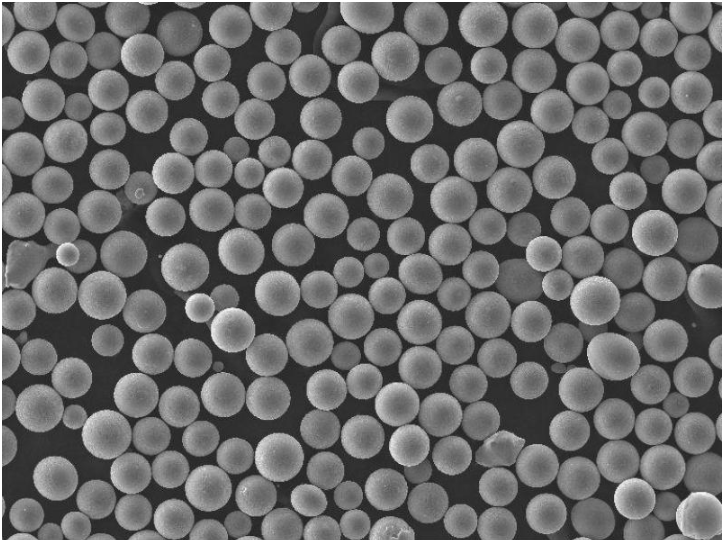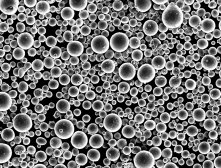Introduction
Definition of Additive Manufacturing
Additive Manufacturing, also known as 3D printing, is a revolutionary manufacturing process that allows the creation of complex and intricate objects by adding material layer by layer. Unlike traditional subtractive manufacturing methods, which involve cutting or drilling away material from a solid block, additive manufacturing builds objects from the ground up, resulting in less waste and greater design flexibility. This technology has gained significant attention and popularity in recent years due to its ability to produce customized products, reduce production time, and lower costs. With additive manufacturing, the possibilities for innovation and creativity are endless.
History of Additive Manufacturing
Additive Manufacturing, also known as 3D printing, has a fascinating history that dates back several decades. The concept of additive manufacturing was first introduced in the 1980s, and since then, it has evolved and revolutionized various industries. The early days of additive manufacturing saw the use of simple materials like plastics, but as technology advanced, the range of materials expanded to include metals, ceramics, and even biological substances. Today, additive manufacturing has become an integral part of industries such as aerospace, automotive, healthcare, and fashion, enabling the creation of complex and customized products with unprecedented precision and efficiency.
Importance of Additive Manufacturing
Additive Manufacturing, also known as 3D printing, has revolutionized the manufacturing industry in recent years. Its importance cannot be overstated, as it offers numerous advantages over traditional manufacturing methods. One of the key benefits of Additive Manufacturing is its ability to create complex geometries and intricate designs that would be impossible to achieve using conventional techniques. This opens up a world of possibilities for product innovation and customization. Additionally, Additive Manufacturing reduces material waste and energy consumption, making it a more sustainable option. With its ability to produce parts on-demand and with greater efficiency, Additive Manufacturing is poised to transform various industries, including aerospace, healthcare, and automotive. The future of manufacturing lies in the hands of Additive Manufacturing, and its importance will only continue to grow.
Types of Additive Manufacturing

Powder Bed Fusion
Powder Bed Fusion is a popular additive manufacturing technique that involves spreading a thin layer of powdered material, such as metal or plastic, onto a build platform. A high-powered laser or electron beam is then used to selectively melt and fuse the powder particles together, layer by layer, according to a 3D model. This process allows for the creation of complex, intricate designs with high precision and accuracy. Powder Bed Fusion is widely used in various industries, including aerospace, automotive, and medical, for the production of functional prototypes, customized parts, and even end-use products.
Directed Energy Deposition
Directed Energy Deposition (DED) is a cutting-edge additive manufacturing technique that involves the precise deposition of material onto a substrate using a focused energy source, such as a laser or electron beam. This process enables the creation of complex geometries and the repair or modification of existing components. DED offers numerous advantages, including high deposition rates, minimal material waste, and the ability to work with a wide range of materials. With its ability to build up layers of material with exceptional precision, DED is revolutionizing the manufacturing industry and opening up new possibilities for design and production.
Material Jetting
Material Jetting is a 3D printing technique that uses inkjet printhead technology to deposit liquid photopolymer materials layer by layer. The printhead moves across the build platform, releasing droplets of material that are then cured by UV light. This process allows for the creation of highly detailed and complex parts with excellent surface finish and accuracy. Material Jetting is particularly suitable for producing prototypes, small batches, and intricate models that require fine details and smooth surfaces. With its ability to print multiple materials simultaneously, Material Jetting offers great flexibility in terms of material properties and color options.
Powder Materials Used in Additive Manufacturing

Metal Powders
Metal powders are a crucial component in the field of additive manufacturing, also known as 3D printing. These fine particles of metal play a significant role in the production of complex and intricate parts. By using metal powders, manufacturers are able to create objects with precise geometries and intricate designs. This process involves layering the metal powder and selectively fusing it together using heat or a laser, resulting in a solid and durable final product. The use of metal powders in additive manufacturing has revolutionized various industries, including aerospace, automotive, and healthcare, by enabling the production of lightweight, high-performance components. With advancements in powder metallurgy and the availability of a wide range of metal powders, additive manufacturing has become a versatile and cost-effective manufacturing method for producing complex metal parts.
Polymer Powders
Polymer powders play a crucial role in additive manufacturing processes. These powders are commonly used in 3D printing technologies to create objects layer by layer. The use of polymer powders offers several advantages, such as the ability to produce complex geometries and lightweight structures. Additionally, polymer powders provide excellent mechanical properties and can be easily customized to meet specific requirements. With advancements in additive manufacturing, the range of available polymer powders continues to expand, allowing for the creation of diverse and innovative products.
Ceramic Powders
Ceramic powders play a crucial role in additive manufacturing, also known as 3D printing. These powders are composed of fine particles of ceramic materials such as alumina, zirconia, and silicon carbide. They possess unique properties that make them ideal for manufacturing complex ceramic components with high precision and accuracy. The use of ceramic powders in additive manufacturing enables the production of parts with excellent mechanical strength, thermal stability, and chemical resistance. Moreover, the ability to control the powder composition and particle size distribution allows for the customization of material properties to meet specific application requirements. As additive manufacturing technology continues to advance, ceramic powders are expected to play an increasingly important role in the production of advanced ceramics for various industries including aerospace, automotive, and medical.
Powder Properties and Requirements

Particle Size Distribution
Particle size distribution is a crucial factor in additive manufacturing powder. It refers to the range of particle sizes present in the powder material. The particle size distribution affects the flowability, packing density, and sinterability of the powder, which in turn influence the quality and properties of the final printed parts. In additive manufacturing, a narrow and consistent particle size distribution is desired to ensure uniform powder spreading and layer formation, resulting in improved part accuracy and surface finish. Therefore, accurate measurement and control of the particle size distribution are essential in the manufacturing process to achieve optimal printing outcomes.
Flowability
Flowability is a critical characteristic in additive manufacturing powder. It refers to the ability of the powder particles to flow freely and uniformly during the printing process. A powder with good flowability ensures consistent and accurate deposition, leading to high-quality 3D printed parts. Factors such as particle size, shape, and surface properties can influence the flowability of the powder. To optimize flowability, manufacturers may employ various techniques, including particle size distribution control and surface treatment. By understanding and controlling flowability, additive manufacturing processes can achieve greater efficiency and produce superior end products.
Chemical Composition
The chemical composition of additive manufacturing powder plays a crucial role in determining the quality and properties of the final product. The powder used in additive manufacturing is typically made up of various metallic or non-metallic elements, such as titanium, aluminum, stainless steel, or ceramic materials. These elements are carefully selected and blended in specific proportions to achieve the desired characteristics, such as strength, durability, or heat resistance. Additionally, the chemical composition of the powder can also influence the printing process itself, affecting factors like powder flowability and sintering behavior. Therefore, a thorough understanding and control of the chemical composition of additive manufacturing powder is essential for ensuring consistent and reliable production of high-quality parts.
Powder Handling and Storage

Powder Contamination
Powder contamination is a significant concern in additive manufacturing. It refers to the presence of foreign particles or impurities in the powder used for 3D printing. These contaminants can negatively impact the quality and integrity of the printed objects, leading to defects and reduced mechanical properties. Common sources of powder contamination include airborne particles, cross-contamination from previous batches, and improper storage conditions. To ensure the success of additive manufacturing processes, it is crucial to implement strict quality control measures and maintain a clean and controlled environment for powder handling and storage.
Powder Recycling
Powder recycling is an essential aspect of additive manufacturing. As the use of additive manufacturing continues to grow, so does the amount of powder waste generated. Powder recycling involves collecting and reusing the unused or excess powder from the manufacturing process. This not only helps reduce waste but also saves costs by minimizing the need for new powder. Additionally, recycling the powder ensures consistent quality in the manufacturing process, as the reused powder retains its original properties. Various techniques are employed for powder recycling, including sieving, filtration, and thermal treatment. These methods help remove impurities and restore the powder to its optimal condition for reuse. Overall, powder recycling plays a crucial role in sustainable and cost-effective additive manufacturing practices.
Powder Storage Conditions
Powder storage conditions play a crucial role in ensuring the quality and performance of additive manufacturing processes. It is important to store the powder in a controlled environment to prevent moisture absorption, oxidation, and contamination. The ideal storage conditions for additive manufacturing powders include low humidity levels, controlled temperature, and proper ventilation. Additionally, it is recommended to store the powder in sealed containers or bags to maintain its integrity and prevent any external factors from affecting its properties. By following the appropriate powder storage conditions, manufacturers can ensure consistent and reliable results in their additive manufacturing processes.
Challenges and Future Trends

Quality Control
Quality control is a crucial aspect of the additive manufacturing powder process. It ensures that the final product meets the required standards and specifications. Various techniques and methods are employed to monitor and assess the quality of the powder used in additive manufacturing. These include particle size analysis, chemical composition testing, and mechanical property evaluation. By implementing rigorous quality control measures, manufacturers can ensure the consistency and reliability of the additive manufacturing powder, leading to high-quality and defect-free products.
Cost Reduction
Additive Manufacturing, also known as 3D printing, has revolutionized the manufacturing industry in many ways. One of the key advantages of this technology is its potential for cost reduction. By using Additive Manufacturing powder, companies can significantly reduce material waste and optimize production processes. This not only leads to lower production costs but also allows for the creation of complex and intricate designs that would be difficult or impossible to achieve using traditional manufacturing methods. Additionally, Additive Manufacturing enables companies to produce on-demand, eliminating the need for large inventories and reducing storage costs. Overall, the adoption of Additive Manufacturing powder can result in substantial cost savings for businesses while also offering greater design freedom and flexibility.
Advancements in Powder Materials
Additive Manufacturing, also known as 3D printing, has revolutionized the manufacturing industry by enabling the production of complex and customized parts. One of the key advancements in this field is the development of new powder materials. These materials play a crucial role in the additive manufacturing process, as they are used as the raw material for creating objects layer by layer. Over the years, there have been significant advancements in powder materials, with researchers and manufacturers constantly striving to improve their properties and performance. Today, a wide range of powder materials are available for additive manufacturing, including metals, polymers, ceramics, and composites. These materials offer various benefits, such as high strength, durability, heat resistance, and chemical stability, making them suitable for a wide range of applications across industries like aerospace, automotive, healthcare, and consumer goods.





